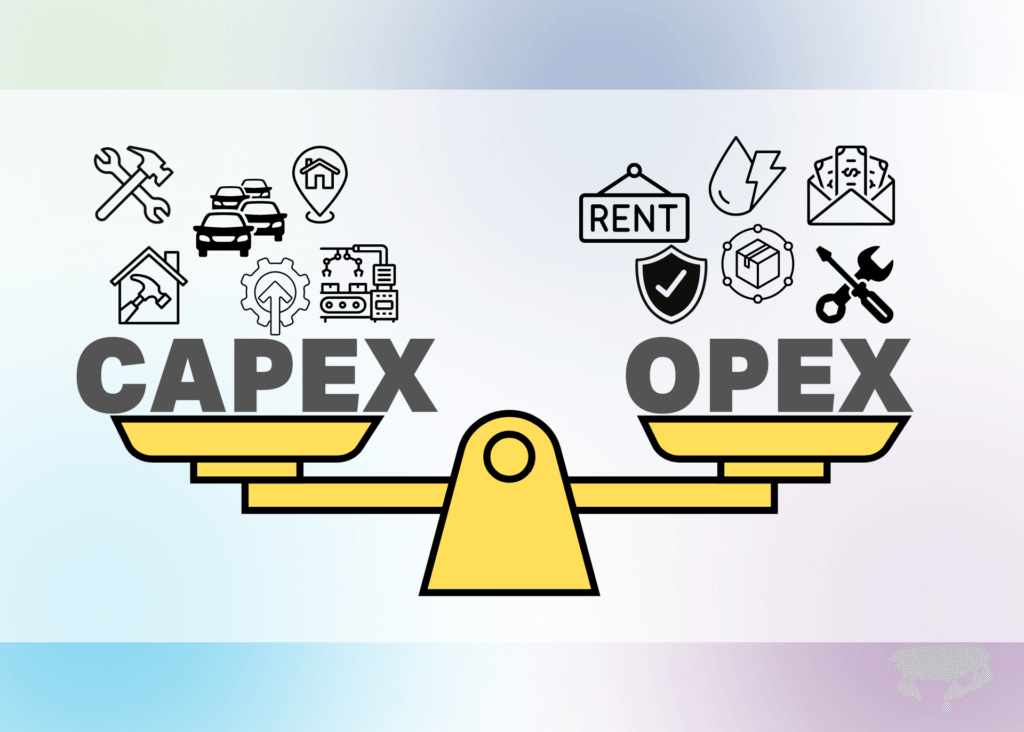Ensuring sustainable growth and efficient operation of facilities requires facility managers to balance Capital Expenditures (CapEx) and Operational Expenses (OpEx). This means investing in assets for the future and managing daily expenses efficiently. It involves spending money to maintain or enhance assets and controlling costs to ensure smooth operations. By focusing on both long-term investments and short-term expenses, businesses can ensure financial stability and growth.
Balancing spending on facility assets is important for extending the life of assets and making operations more efficient. Some key strategies facility managers employ to enhance CapEx and OpEx efficiency include:
- cost per square foot management,
- utility cost control,
- proactive incident prevention,
- staffing optimization, and
- vendor expenditure streamlining
1. Cost Per Square Foot Management
Facility managers often base their operational decisions on the metric of cost per square foot. This metric helps managers decide on prices for tenants, balancing costs and revenue generation for CapEx considerations.
Typically, OpEx costs tied to cost per square foot can take time to forecast. To address this, facility managers must explore ways to fine-tune operational and management outlays. Digitization is crucial for fully understanding projected capital expenditures — but this relies on the availability of clean, accurate, and dependable data for decision-making.
A digital system to collect data easily and calculate costs per square foot efficiently is key.
2. Utility Cost Control
Utility costs can vary substantially based on geographical location and fluctuating prices. Regulatory pressures to reduce energy consumption and adopt eco-friendly practices have compounded these costs in recent years. By identifying practical strategies for cost reduction, and monitoring their ecological footprint, facility managers can assess efficiency and manage related OpEx outlays.
3. Proactive Incident Prevention
Incidents, whether minor or critical, can significantly impact seamless facility operations. Unexpected disruptions such as work-related injuries, power outages, equipment failures, security breaches, or human errors can have financial, performance, and reliability consequences. Using technology to standardize and monitor compliance and automate tasks can prevent mistakes, save money, and make decisions easier.
4. Staffing Optimization
Optimizing staffing and payroll expenditures requires a comprehensive understanding of the human resources needed to manage a facility’s critical infrastructure. Implementing task automation, particularly for routine administrative tasks, can yield remarkable cost savings and boost productivity. Leveraging software for automated notifications, reports, and management tools can reduce staffing requirements and generate substantial savings.
5. Vendor Expenditure Streamlining
Facility managers can save money and improve efficiency by choosing between in-house or outsourced vendors and negotiating prices. When there are fewer workers, facilities need the right software to work better and save time. Facilities can also prevent wasteful and unnecessary maintenance cycles by using software-driven predictive scheduling to schedule maintenance tasks.

Successful CapEx and OpEx
Successful facility management demands a harmonious integration of CapEx and OpEx considerations. Operators have difficulty determining their risk tolerance when using outdated data collection methods and multiple siloed systems. This can prevent them from achieving significant rewards.
As facilities grow and change, it’s important to have a central platform for critical tasks. Treating this platform with equal importance as building layout, design, and construction sets facilities up for success during deployments. By embracing digitization, automation, and data-driven decision-making, facility managers can optimize their CapEx and OpEx strategies for long-term success.



